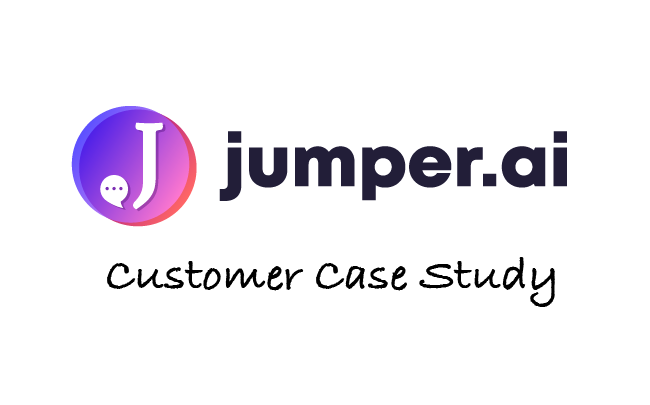When I look at our Google Analytics data at Woodpecker, I can see that the vast majority of our website visitors that become leads come from organic or paid search. And I believe that it’s similar in the case of your SaaS too. The internet users run a query in Google and your website comes up among other results. That’s why I believe your website can be the surest lead generation platform at your disposal. Let’s learn how to do it.
Enhancing outbound lead generation with your website
Some time ago I wrote an article here about updating your website in order to boost your cold email campaign response rate. I argued about the importance of having a well-managed website and what it means for your outbound lead generation. Basically, many of your prospects who opened your message will google your site and inspect it before replying to your cold email. What they’re going to see, may make or break their trust.
The same goes for social media profiles. Well-kept social media profiles may increase your campaign’s results whereas poorly run accounts can make you appear untrustworthy. And the kind of content you produce on the blog has a similar sort of power to drive your outbound lead generation.
Just read:
- How Should I Take Care of My Brand Online Before Email Outreach? >>
- How Great Content Makes You More Persuasive >>
- 15+ Places Where You Can Find B2B Leads, Other than LinkedIn >>
- How to Generate B2B Leads Online the Outbound Way?
- An In-Depth Local Lead Generation Guide
What about elevating inbound lead generation?
The same way, keeping the pulse on your website and the content on it may skyrocket your inbound lead generation. And there’s one thing people still forget to do to push the number of leads they have forward. They forget to actively follow up with those who have interacted with their site.
Scraping the email addresses of your website visitors isn’t ethical, and I don’t encourage you to do so. Besides, it wouldn’t be effective, because not everyone who visits your website is a qualified lead. Yet, if they show interest by filling out a contact form or watching a webinar — in other words, they interacted with your content, they’re further down your sales funnel and may correspond to your ICP.
Sometimes, website visitors need a small encouragement to go through your pipeline, or worse, your website isn’t optimized for lead generation. So, here, I want to show you how to create a lead generation strategy for your website and how to follow up with website visitors for greater conversion. Let’s start.
How to get more leads from your SaaS website?
#1 Conduct a website audit
Take a minute and try to answer those questions:
- How many contact forms do you have and where are they located? They can be placed on the bottom of each page, on the “contact me” page, on the homepage.
- Do you have an invitation to get a demo on your website? Where is it? Demo sign-up is a must-have website element for the majority of SaaS companies that sell software. If that’s your niche too, make sure your demo signup is well visible.
- What kind of information do you collect on your pricing page? What do the users see there? It’s typical to include your pricing on the website or say anything about the billing. Do you collect information there?
- Do you invite people to contact you on customer studies or the tab with testimonials? Customer case studies are a great mechanism that persuades people to buy. You can leverage their power and put a sign-up or contact form on the testimonial to drive interest.
- Do you have any popups on your website? A lot of SaaS companies use popups to get more sign-ups. Are you one of those companies? If so, make sure you include all the popups on the list.
- Where can people sign up for marketing content and what kind of content? Some people use webinars or gated content to prospect for potential customers. This kind of strategy can work pretty well. Our business growth team has tried this one time. I described it here.
- How many landing pages do you have and how a person can get to them? You can have a separate landing page, for example, one per your target vertical.
- Where do you direct traffic from the ads if you run any? Is your marketing team running an AdWords campaign? Where does this campaign direct the captured contacts? Is it your blog or a page packed with benefits? It’s valuable to know that.
- Do you use retargeting ads? Retargeting ads help direct traffic back to your site, but what way they enter? What’s the page they see when they come back?
- Where else do you get sales prospect leads from? Think if you have a contact form on your help page, etc. You need to know all the secret doors.
You see, we’ve conducted a sort of a website audit. That’s great. You know how the website visitors can contact you on your website. You’ve got all of it under control.
To get a better grip on things, you can integrate every form where people leave their email with Helpscout or other CRM, so that your salesreps get informed about where the prospect came from.
To get an even better grip on things, you can ask your programmers to connect the signup buttons with your database, so you know where the prospects came from exactly. Then, your sales rep has a better picture of what’s going on. Even better, they can talk about a given traffic source with the prospect in a warm-up phase.
You can also use UTM tags whenever you link to your site externally. It can give you the exact amount of knowledge you need to talk with the people who come to your website. UTM tags inform you where the lead is coming from so you don’t have to spend your time guessing and you can react fast to any request you get.
We have a guest post on how to track your links that have a UTM code in your cold email campaign. Read it here: How to Analyze Campaigns Beyond Open Rates? >>
#2 Find new ways of generating targeted traffic on your website
It’s possible to create a more personalized experience on your site and a lot of SaaS companies are heading in that direction. For that, you need a new strategy of communicating your brand to your customers on your website. So, instead of talking to everyone who might be possibly interested in your offering, create a few customer avatars that correspond with your Ideal Customer Profile.
Then, prepare landing pages for each vertical, team or a use case and tell them how can you help them. Show them benefits over features, just like you would in a cold email pitch and make sure that your sales rep gets a notification any time somebody signs up at this page.
A lot of companies are trying this out. For example, Active Campaign improved their sales funnel by doing that. They shared it on Wild Audience’s blog. Read it here
You can do that too and improve your sales funnel. Plus, if you connect your CRM with your signups and your sales rep gets a notification any time somebody signs up on a page like that you can get more sales. Strike the iron while it’s hot.
#3 Create automated email campaigns in Woodpecker
Nonetheless, it doesn’t matter if you know exactly where and when somebody signs up until you can talk with your website visitors while they’re still interested. Remember our blog post about converting inbound leads into sales? Well, this time, too, an automated email warmup campaign in Woodpecker can help you contact your leads at the right moment.
Sync Woodpecker with the software that you store the data from contact forms on, so you don’t need to copy and paste between the app. You can do that with Woodpecker for WordPress plugin.
Keep Woodpecker campaigns ready to send emails to leads. Prepare one campaign per the sign-up source and always have it at hand. What to write in an email? Well, allude to the source where the lead signed up. For example, if an inbound lead came from a webinar, use these tips to create a post-webinar email sequence. Remember — inbound leads differ from outbound ones.
You will have more than one email campaign in Woodpecker, so use folders to easily sort through your campaigns. They will come in handy at this point.
Make a lead gen machine out of your SaaS website
Now it’s your turn. Rethink the signups on your page, work on new pages if necessary to improve your sales funnel. Yet, for better conversion, create a personalized email sequence that generates a ton of long-staying customers.
FAQ on generating leads on your website
Want to convert leads more effectively but have some doubts? Check out the answers.
READ ALSO

How SaaS for E-commerce Can Generate Leads Through Email: Jumper.ai
Positive feedback from a satisfied customer is always a huge motivator that gives us wings. Recently we had a pleasure to interview Jumper.ai team who shared their experience with Woodpecker and told us a few words about how it helped them reach new customers. Read the full story below.

Woodpecker for WordPress – Generate More Leads with Your Web Forms
What happens to the website visitors who filled out a form on your website? Do they get transferred into your CRM? Or does your newsletter software pick them up? What about uploading that data to Woodpecker? Previously, you needed to use an API aggregator, such as Zapier or PieSync, to send the data from lead forms into Woodpecker. From now on, however, you don't have to do that. If you’re on Team Pro plan, you can use Woodpecker for WordPress, a plugin that transfers the lead data directly into a Woodpecker campaign of your choice.

Why Does Your Business Need Customer Testimonials & How to Get Them?
How many times have you come across an interesting product while googling a solution to your problem? You considered buying but had some objections and boom - you read a testimonial from a business like yours that resolved your doubts. You decided to make the purchase... How to replicate that for your business? I'm gonna show you now.

